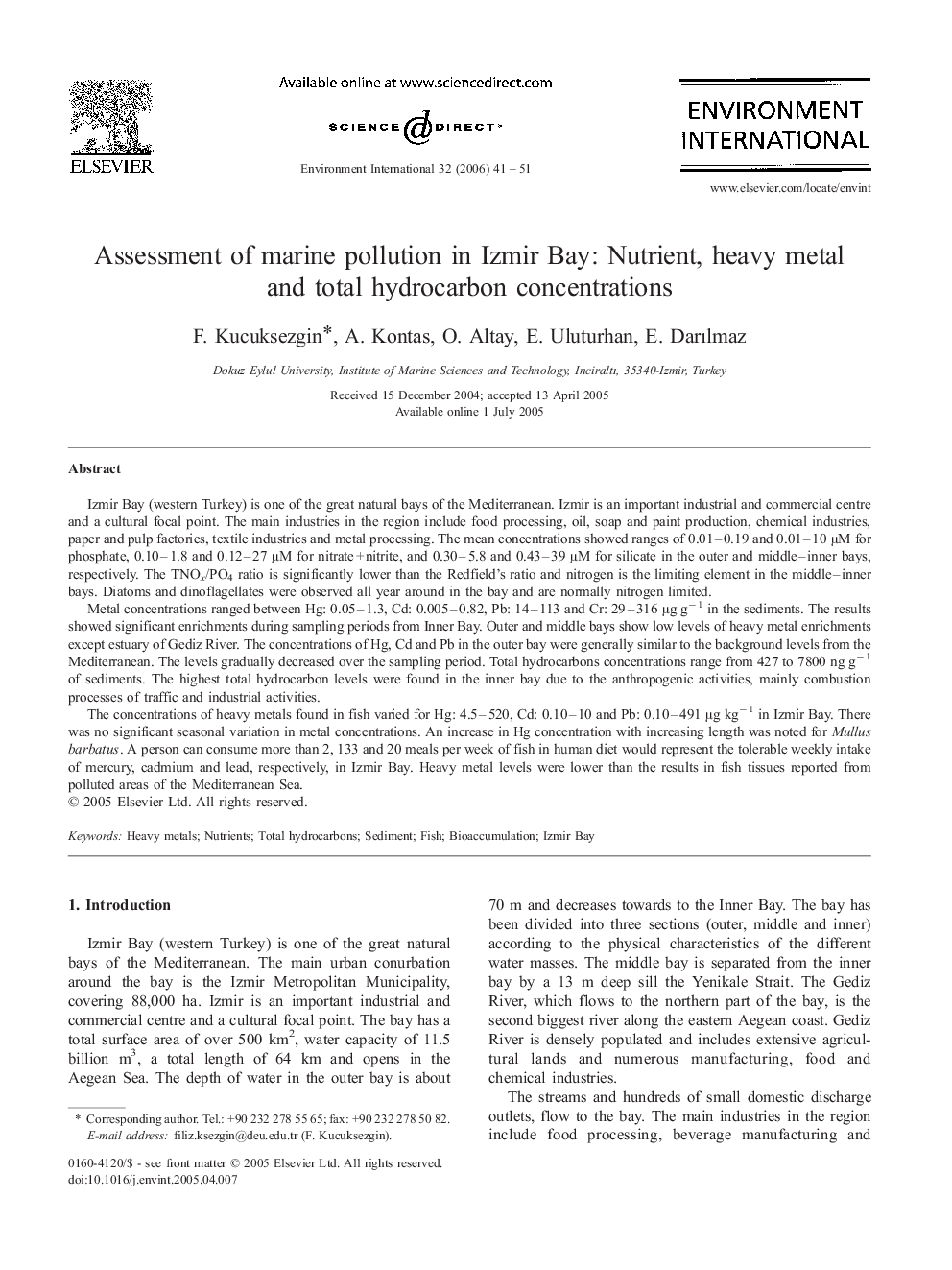| کد مقاله | کد نشریه | سال انتشار | مقاله انگلیسی | نسخه تمام متن |
|---|---|---|---|---|
| 4424138 | 1308866 | 2006 | 11 صفحه PDF | دانلود رایگان |

Izmir Bay (western Turkey) is one of the great natural bays of the Mediterranean. Izmir is an important industrial and commercial centre and a cultural focal point. The main industries in the region include food processing, oil, soap and paint production, chemical industries, paper and pulp factories, textile industries and metal processing. The mean concentrations showed ranges of 0.01–0.19 and 0.01–10 μM for phosphate, 0.10–1.8 and 0.12–27 μM for nitrate + nitrite, and 0.30–5.8 and 0.43–39 μM for silicate in the outer and middle–inner bays, respectively. The TNOx/PO4 ratio is significantly lower than the Redfield's ratio and nitrogen is the limiting element in the middle–inner bays. Diatoms and dinoflagellates were observed all year around in the bay and are normally nitrogen limited.Metal concentrations ranged between Hg: 0.05–1.3, Cd: 0.005–0.82, Pb: 14–113 and Cr: 29–316 μg g− 1 in the sediments. The results showed significant enrichments during sampling periods from Inner Bay. Outer and middle bays show low levels of heavy metal enrichments except estuary of Gediz River. The concentrations of Hg, Cd and Pb in the outer bay were generally similar to the background levels from the Mediterranean. The levels gradually decreased over the sampling period. Total hydrocarbons concentrations range from 427 to 7800 ng g− 1 of sediments. The highest total hydrocarbon levels were found in the inner bay due to the anthropogenic activities, mainly combustion processes of traffic and industrial activities.The concentrations of heavy metals found in fish varied for Hg: 4.5–520, Cd: 0.10–10 and Pb: 0.10–491 μg kg− 1 in Izmir Bay. There was no significant seasonal variation in metal concentrations. An increase in Hg concentration with increasing length was noted for Mullus barbatus. A person can consume more than 2, 133 and 20 meals per week of fish in human diet would represent the tolerable weekly intake of mercury, cadmium and lead, respectively, in Izmir Bay. Heavy metal levels were lower than the results in fish tissues reported from polluted areas of the Mediterranean Sea.
Journal: Environment International - Volume 32, Issue 1, January 2006, Pages 41–51